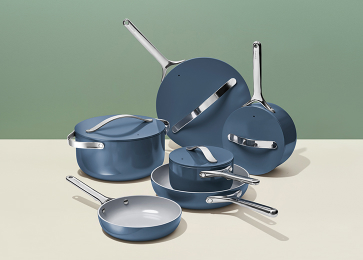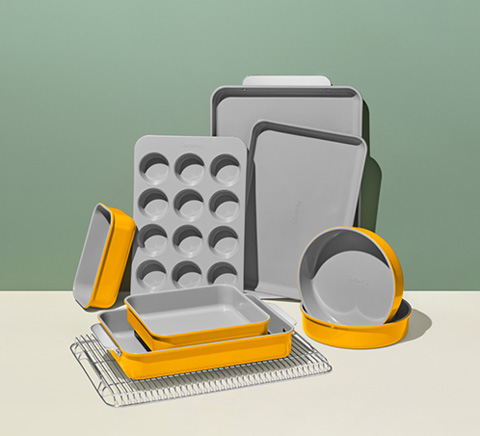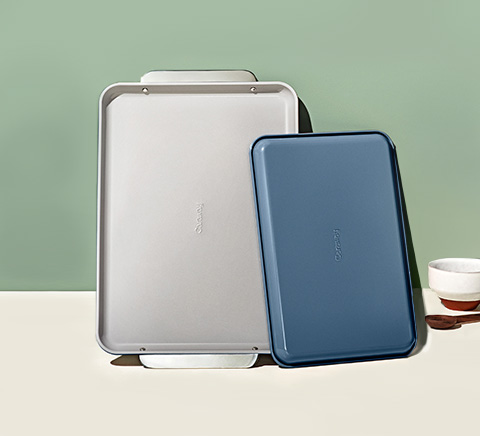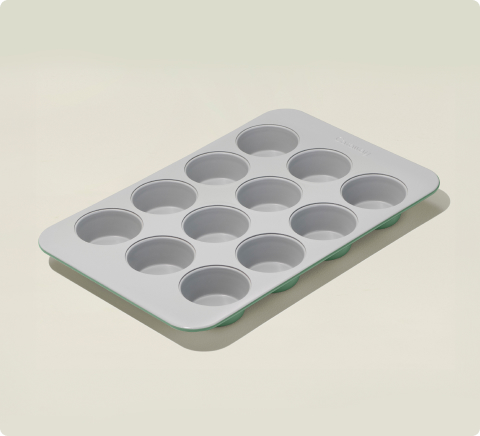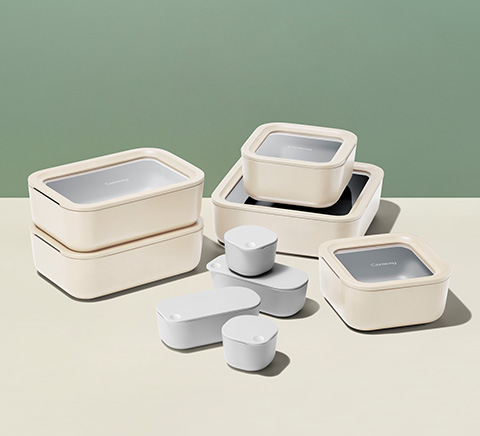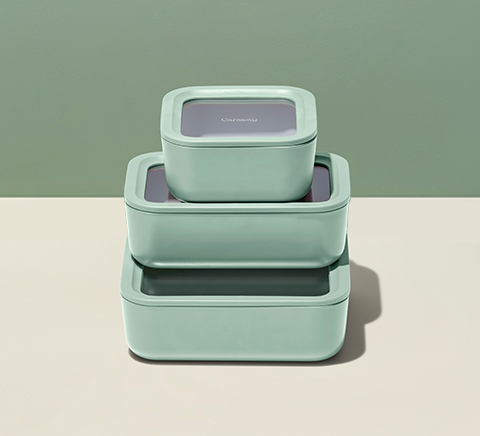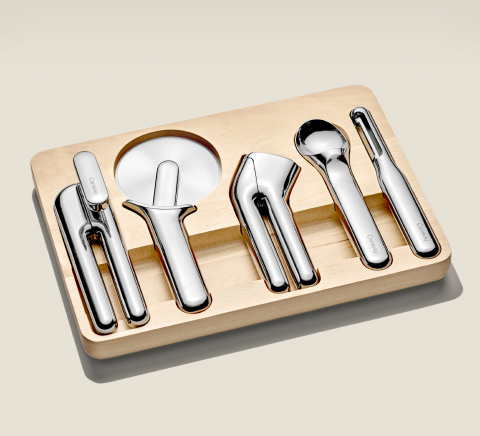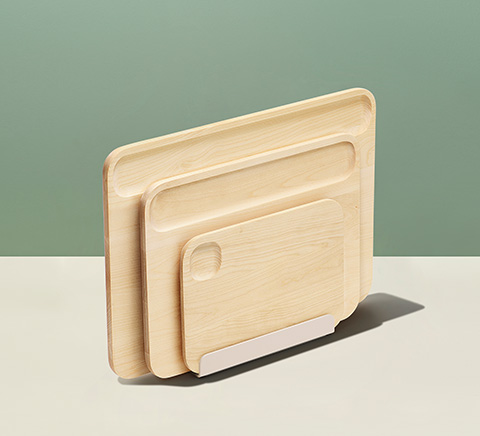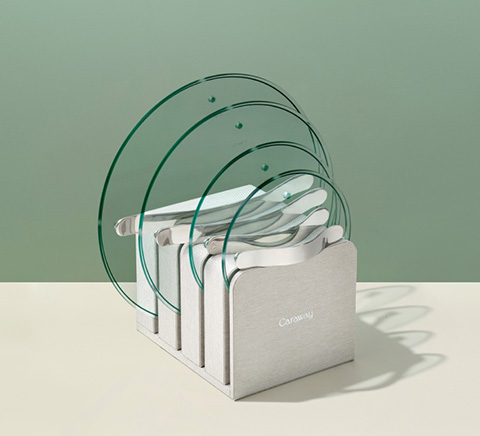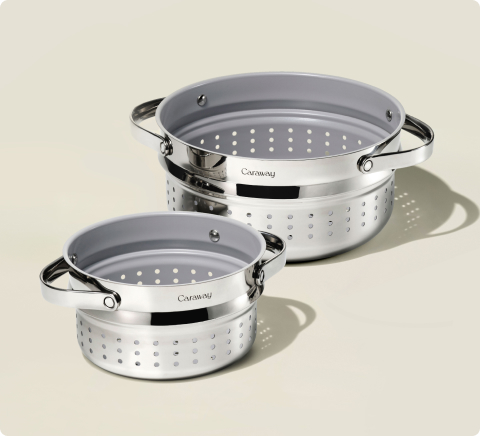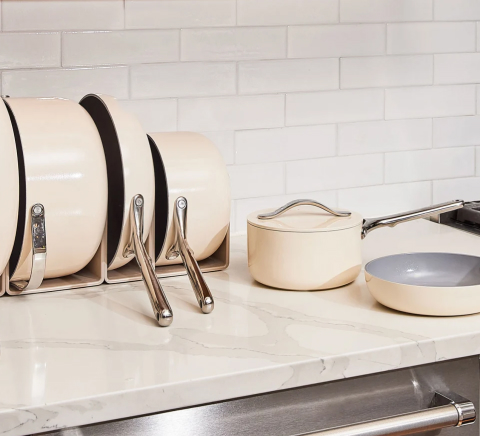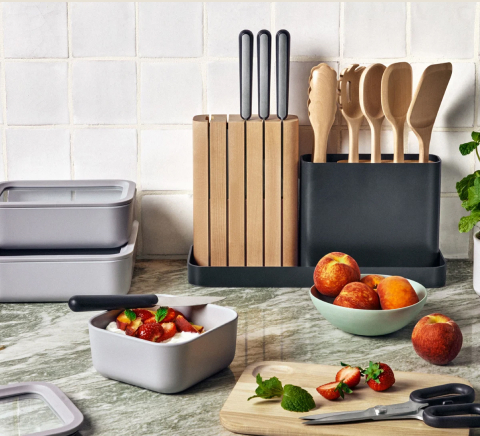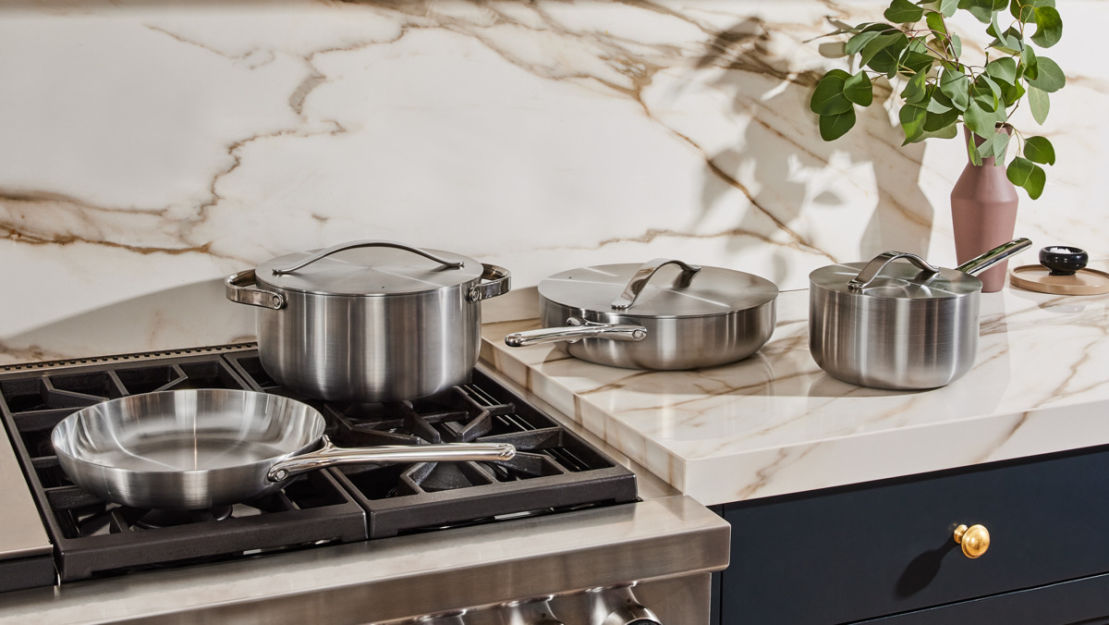Embarking on the quest for the perfectly cooked egg is a tale as old as time in the culinary world. Here at Caraway, we believe that the right cookware is not just about the material—it's about enhancing your cooking experience while ensuring health and efficiency.
Our stainless steel pans are crafted to elevate this everyday task into a seamless blend of function and style, making the dreaded stick and scrub a thing of the past.
Embarking on the quest for the perfectly cooked egg is a tale as old as time in the culinary world. Here at Caraway, we believe that the right cookware is not just about the material—it's about enhancing your cooking experience while ensuring health and efficiency.
Our stainless steel pans are crafted to elevate this everyday task into a seamless blend of function and style, making the dreaded stick and scrub a thing of the past.
Why Choose Stainless Steel for Cooking Eggs?
Cooking eggs can be a sticky business, but with the right pan, it turns into an effortless art. Here’s why our stainless steel pans are great for your kitchen:
- Even Heat Distribution: Say goodbye to unevenly cooked eggs. Our pans ensure heat is spread uniformly, cooking your eggs just right.
- Non-Toxic Cooking: Our commitment to your health is ironclad. No PFOA, PTFE, or other harmful chemicals—just pure, safe cooking.
- Durability and Ease of Maintenance: These pans are built to last, resist warping, and are a breeze to clean, ensuring they remain a staple in your kitchen for years to come.
- Versatility: Whether you're a fan of scrambled, fried, or poached, stainless steel handles it all, making it a versatile choice for any egg dish.
Step-by-Step Guide To Cooking Eggs in a Stainless Steel Pan
Cooking eggs in a stainless steel pan doesn't have to be a daunting task. With the right approach, you can enjoy perfectly cooked eggs every time.
Here's a step-by-step guide to help you master the art:
Step 1: Preheat Your Pan The foundation of perfectly cooked eggs in a stainless steel pan begins with preheating. Place your stainless steel pan on the stove over medium heat. This crucial step ensures the pan is hot enough to create a non-stick surface, preventing the eggs from clinging to the bottom.
Do the water test to ensure it is hot enough. You'll know the pan is hot enough if a drop of water stays intact and rolls around on the surface (beading) before evaporating.
Step 2: Add Fat Once the pan is heated, add a thin layer of oil or butter. High-smoke-point oils like refined avocado or sunflower oil are excellent choices, as they withstand higher temperatures without burning.
Step 3: Crack the Eggs Crack your eggs into a separate bowl to avoid unwanted shell pieces. If you hear a sizzling sound as the ingredients hit the pan, you’ll know your pan is at the perfect temperature.
Then, gently pour them into the pan. This method allows for more control over the cooking process and ensures the eggs maintain their shape.
Step 4: Cook to Your Preference Depending on your preference, the cooking process can vary: For Sunny Side Up: Let the eggs cook undisturbed until the whites are fully set, but the yolks remain runny. A lid can be used briefly to finish the tops without flipping.
For Over Easy or Over Hard: Wait until the egg whites firm up and the edges start to curl slightly. Carefully flip the eggs with a thin spatula, cooking for an additional few seconds for over-easy or longer for over-hard.
Step 5: Season Sprinkle your eggs with a pinch of salt and pepper or your favorite herbs just before they’re done. This final touch enhances the flavors and brings your dish to perfect completion.
Step 6: Serve Immediately To avoid overcooking, promptly remove the eggs from the pan and onto a plate. Stainless steel retains heat well, so it’s important to transfer your eggs as soon as they’re cooked to your liking.
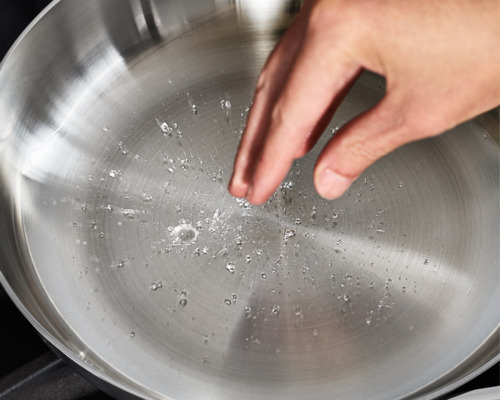
Troubleshooting Common Issues
Cooking with stainless steel offers a sleek, efficient way to prepare meals, but it may come with a learning curve — especially when cooking eggs. Let's address some common issues and how to solve them, ensuring your beloved stainless steel pan continues to be your go-to.
Sticking Problems
Sticking is often the first hurdle. If eggs are sticking, it's typically due to insufficient preheating or not enough fat.
Ensure your pan is evenly heated to the right temperature before adding a generous amount of oil or butter. Remember, stainless steel doesn’t have the same natural non-stick properties as some coatings, but a well-preheated pan and the right amount of fat make all the difference.
Uneven Cooking
Uneven cooking can occur if the pan isn’t properly preheated or the heat source is too high or too low. Stainless steel pans are designed for even heat distribution. To prevent uneven cooking, start with medium heat and adjust as needed, ensuring the entire base of the pan has reached the optimal temperature before adding your eggs.
Overcooking
Overcooking eggs is a common but easily avoidable issue. Stainless steel retains heat efficiently, so removing the pan from the heat source just before the eggs reach your desired doneness is essential. The residual heat will continue to cook the eggs without overdoing it.
Cleaning Challenges
If you're facing cleaning challenges, it's likely due to overheating, insufficient preheating, or not enough fat used. To clean your stainless steel pan after cooking eggs, boil one part vinegar and three parts water in the pan. This can loosen any stuck pieces.
For tougher residues, a paste of baking soda and water or BarKeeper’s Friend applied gently with a soft sponge can work wonders without scratching the surface. Our stainless steel cookware is designed for durability, but treating it with care will extend its life and performance.
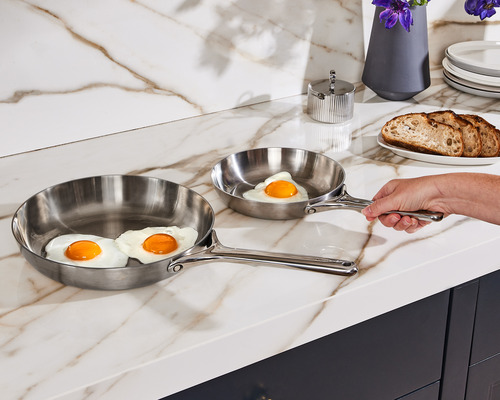
Maintaining Your Stainless Steel Pan After Cooking Eggs
After mastering the art of cooking eggs in a stainless steel pan, proper maintenance ensures your cookware continues to perform at its best.
Here are tips to keep your stainless steel pan in prime condition, ensuring longevity and preserving its non-stick qualities:
Immediate Cleaning
While our pans are designed for easy cleanup, immediate attention post-cooking can prevent food residues from becoming stubborn. Once the pan cools to a safe temperature, rinse it under warm water to loosen any leftover bits.
For most cases, a gentle wash with a soft sponge and mild detergent will suffice. Avoid letting the pan sit dirty for too long, as eggs can leave residues that harden over time.
Avoiding Harsh Abrasives
The beauty of our stainless steel cookware lies in its durability and resistance to scratches. However, maintaining this aesthetic means avoiding harsh abrasives.
Steel wool or harsh scouring pads can scratch the surface, diminishing its shine. Stick to softer cleaning materials that effectively clean without damage.

Dealing With Stubborn Residues
Should you encounter stubborn residues, a paste made from baking soda and water is your best friend. Apply this paste gently with a soft sponge, allowing it to sit for a few minutes before washing. This method can help lift stubborn spots without the need for aggressive scrubbing that could harm the pan’s surface.
Dry Thoroughly
After washing, thoroughly drying your stainless steel pan is important. Water spots can mar the pan's appearance and potentially lead to mineral buildup over time. Use a soft, dry cloth to wipe the pan dry, or allow it to air dry completely before storing. Proper drying also prevents the risk of rust, keeping your pan pristine.
Proper Storage
Proper storage is key to maintaining the integrity of your stainless steel cookware. Avoid stacking pans directly on top of each other without protection, as this can lead to scratches.
Use pan protectors or soft cloths between pans when stacking, or hang them if space allows. This care ensures your pans remain scratch-free and ready for their next use.
A Final Word
At Caraway, we take pride in offering cookware that combines style, functionality, and health consciousness. Our guide to cooking eggs in a stainless steel pan is an invitation to experience the joy of cooking with tools designed for modern living.
Whether it's a simple scrambled egg or an elegant omelet, our stainless steel cookware ensures that your culinary creations come out perfectly every time, with minimal fuss and maximum flavor.
Embrace the ease of non-toxic, evenly heated, and durable pans that transform even the simplest meals into gourmet experiences. With Caraway, elevate your everyday cooking to new heights, where quality, safety, and style meet at every meal.
Sources:
Eating healthy fats has many benefits | UCLA Health How to Tell if Your Stainless Steel Pan is Hot Enough Without a Thermometer | LifeHacker Understanding cooking oil smoke points | About Olive Oil Abrasives - How do abrasives work? | JRank Articles
